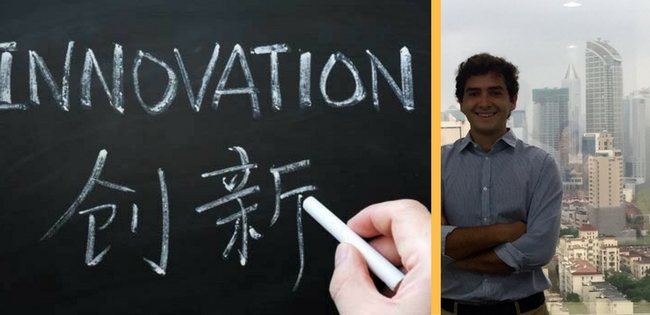Startup competitions, incubators and accelerators are becoming increasingly common in major Chinese cities. Venture capital (VC) in China has been skyrocketing, growing seven-fold in the last 5 years. Innovation is on the rise in China. Why China needs to innovate, in which way it has been innovating, in which places and sectors Chinese innovation is rising, and what challenges China has to confront are the main focus of this article.
The Rise of Innovation Hubs
The Chinese government’s policies, which are meant to sustain competitiveness and growth, are turning the land of cheap and low quality manufacturing into an “innovation powerhouse”. Innovation usually mainly develops in urban communities with good universities, research centres and wealthy investors. The Silicon Valley was born out of Stanford and University of California; Kendall Square out of the MIT and the Harvard Medical School. Similarly, the Academy of Sciences, and Tsinghua and Peking Universities have played a fundamental role in the transformation of Beijing into an innovation hub. However, with the exception of Beijing and partially Shanghai, innovation in China has mainly unfolded as a top-down and state-backed process (such as in Shenzhen and Chengdu).
Local government thus play an important role. For instance, Shanghai’s government has approved a new policy to compensate investors as much as 60% of any losses suffered from early-stage investments in startups. Beijing’s government has been the most supportive so far, investing 6.3% of its budget on science and technology in 2014, more than Shanghai and Shenzhen (5.3% and 3% respectively). Chengdu’s government only invests around 1.2% of its budget on S&T, but it has increased by an astonishing 78.7% in the period 2011-2014.
Another driving force is exerted by the business sector. In 2014, Shenzhen’s industrial enterprises have collectively invested an astonishing amount of $21 billion in R&D, 53% more than in 2011. Shanghai’s enterprises performed well too, with $6.7 billion in 2014. Both Beijing and Chengdu lag behind with investments around $3.5 billion and $3 billion. However, Chengdu outstands in terms of growth: in 2011-2014, industrial enterprises’ investments in R&D have increased by an extraordinary 88%.
Once the environment enables startups to spring up, what these need the most is funding. And when it comes to scaling up, the most common source is venture capital (VC). Beijing has been the city that secured the most venture capital in 2015, followed by Shanghai ($20 billion through 677 deals in Beijing, against $12.2 billion through 365 deals in Shanghai). Beijing can also count on all the 2015 top VC companies. All of these but one also have a branch in Shanghai. On the other hand, Shenzhen is home only to two of the major VC companies, and Chengdu to none them. It is interesting to see what all these elements have lead to.
A Quick Comparison of the Major Hubs
Beijing Zhongguancun Science Park, the first special area to be established, is nowadays the largest centre of innovation in China, with over 2 million people involved in 15,645 high-tech companies in 2014. Beijing is home to 19 unicorn startups (such as Xiaomi, and Didi Kuaidi), and it particularly outstands in the fields of biotechnology and biomedicine.
While Beijing remains the most important innovation hub in China, it is growing less rapidly then Shenzhen. This hub, which is home to the unicorn DJI (civilian drones), is smaller than Beijing, with 1,435 companies and 442 thousand people involved in 2014. However, it has been growing at great speed in the last few years. Thanks to its strong ecosystem in manufacturing (which translates into quicker and cheaper prototyping), Shenzhen is specializing in hardware: some people already call it the “Silicon Valley of hardware”. In 2013 it has been the worldwide leader in ICT patents filing in 2013, filing slightly less than 8 thousand new patents in the sector, overtaking Tokyo and San Francisco–San Jose–Oackland.
Shanghai can count on two development zones, which were home to 3,881 high-tech enterprises in 2014, engaging almost 780 thousand people. In 2016, Shanghai has been home to 8 unicorns so far (Lufax, Ele.me, and China Rapid Finance among the others). This innovation hub is particularly standing out in the field of pharmaceuticals. One in every three new drugs in China comes from this tech park. However, while the pharmaceutical sector is highly developed, Shanghai seems to be loosing ground on Beijing and Shenzhen.
Finally, Chengdu cannot be described as a totally formed innovation hub yet: it is still in the early stages of development, which are characterised by a not-yet-specialised innovation activity, impressive growth rates, great opportunities but also high uncertainty.
The Challenges Ahead
At its root, innovation arises out of new ideas. That is why the lack of intellectual property protection and the lack of rule of law are great challenges the Chinese government has to address. On the investors’ side, one of the main problems is the lack of transparency and reliable information. Finally, it is hard for companies to scale up through the stock exchange: it can take years for the Chinese Securities Regulatory Commission to review an IPO application, and by August 11 686 companies were still waiting for approval.
China has realised that it has to innovate; it has embarked on a major effort to innovate, thus bringing many and various hubs to life; and if it manages to clear the path of innovation from the main issues, it has a great chance to catch-up (if not overtake) the US in the innovation race.




















Lascia un commento